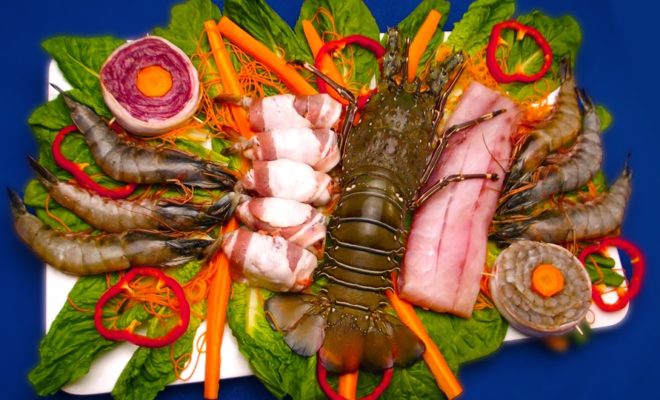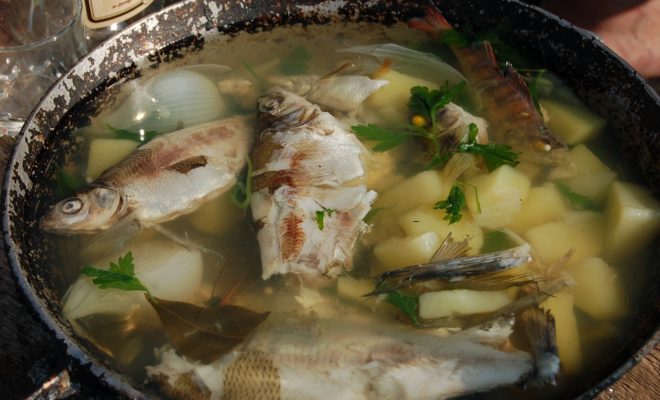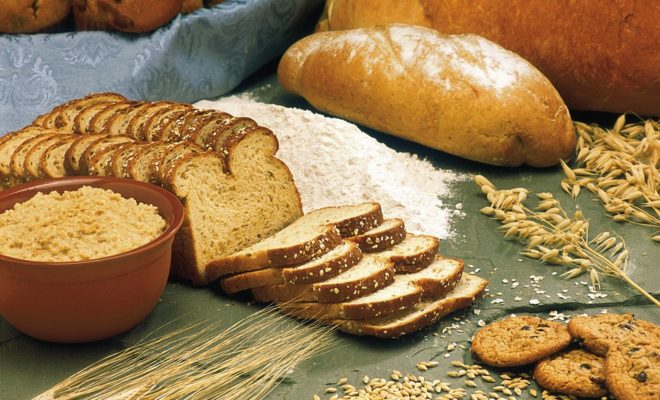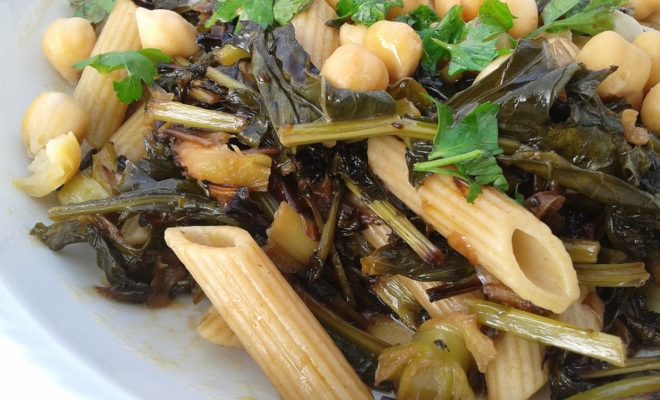THE CHEMISTRY AND ECONOMY OF SOUP-MAKING

Stock being the premise of all meat soups, and, likewise, of all the chief sauces, it is fundamental to the accomplishment of these culinary operations, to know the most entire and prudent strategy for removing, from a specific amount of meat, the most ideal stock or juices. The hypothesis and rationality of this procedure we will, consequently, clarify, and afterward continue to demonstrate the viable course to be embraced.
As all meat is primarily made out of filaments, fat, gelatine, osmazome, and egg whites, it is imperative to realize that the strands are indivisible, constituting all that remaining parts of the meat after it has experienced a long bubbling. Fat is broken up by bubbling; yet as it is contained in cells secured by a fine film, which never breaks up, a bit of it generally clings to the filaments. The other segment ascends to the surface of the stock, and is what has gotten away from the cells which were not entire, or which have blasted by bubbling. Gelatine is dissolvable: it is the premise and the nutritious segment of the stock. At the point when there is a plenitude of it, it makes the stock, when icy, turn into a jam. Osmazome is dissolvable notwithstanding when frosty, and is that part of the meat which gives flavor and scent to the stock. The substance of old creatures contains more osmazome than that of youthful ones. Cocoa meats contain more than white, and the previous make the stock more fragrant. By simmering meat, the osmazome seems to get higher properties; along these lines, by putting the remaining parts of dish meats into your stock-pot, you get a superior flavor.
Egg whites is of the way of the white of eggs; it can be broken down in chilly or lukewarm water, however coagulates when it is put into water not exactly at the breaking point. From this property in egg whites, it is apparent that if the meat is put into the stock-pot when the water bubbles, or after this is made to bubble up rapidly, the egg whites, in both cases, solidifies. In the main it ascends to the surface, in the second it stays in the meat, however in both it keeps the gelatine and osmazome from dissolving; and thus a thin and bland stock will be acquired. It should be known that the coagulation of the egg whites in the meat, dependably happens, pretty much, as indicated by the extent of the piece, as the parts most remote from the surface dependably obtain that level of warmth which solidifies it before altogether dissolving it.
Bones should dependably to frame a segment part of the stock-pot. They are made out of a natural substance, to which they owe their strength, of gelatine, and a greasy liquid, something like marrow. Two ounces of them contain as much gelatine as one pound of meat; yet in them, this is so incased in the gritty substance, that bubbling water can break down just the surface of entire bones. By breaking them, be that as it may, you can disintegrate more, since you increase their surfaces; and by lessening them to powder or glue, you can disintegrate them totally; yet you should not crush them dry. Gelatine frames the premise of stock; yet this, however extremely supporting, is completely without taste; and to make the stock appetizing, it must contain osmazome. Of this, bones don’t contain a molecule; and that is the motivation behind why stock made totally of them, is not enjoyed; but rather when you add meat to the broken or pounded bones, the osmazome contained in it makes the stock adequately appetizing.
In finishing up this some portion of our subject, the accompanying dense insights and bearings ought to be gone to in the economy of soup-production:
Hamburger makes the best stock. Veal stock has less shading and taste; while sheep some of the time gives it a tallowy smell, a long way from pleasant, unless the meat has been beforehand cooked or seared. Fowls add almost no to the kind of stock, unless they be old and fat. Pigeons, when they are old, add the most flavor to it; and a rabbit or partridge is additionally an extraordinary change. From the freshest meat the best stock is acquired.
On the off chance that the meat be bubbled exclusively to make stock, it must be cut up into the littlest conceivable pieces; at the same time, as a rule, in the event that it is coveted to have great stock and a bit of flavorful meat also, it is important to put a somewhat expansive piece into the stock-pot, say adequate for a few days, amid which time the stock will keep well in all climates. Pick the freshest meat, and have it cut as thick as could be expected under the circumstances; for on the off chance that it is a thin, level piece, it won’t look well, and will be soon ruined by the bubbling.
Never wash meat, as it denies its surface of every one of its juices; isolate it from the bones, and tie it round with tape, so its shape might be protected, then place it into the stock-pot, and for every pound of meat, let there be one 16 ounces of water; press it down with the hand, to permit the air, which it contains, to get away, and which regularly raises it to the highest point of the water.
Put the stock-pot on a delicate fire, so it might warm step by step. The egg whites will first break down, a short time later coagulate; and as it is in this state lighter than the fluid, it will ascend to the surface; carrying with it every one of its contaminations. It is this which makes the rubbish. The ascending of the solidified egg whites has an indistinguishable impact in illuminating stock from the white of eggs; and, when in doubt, it might be said that the more rubbish there is, the clearer will be the stock. Continuously take mind that the fire is exceptionally standard.
Expel the rubbish when it rises thickly, and don’t let the stock bubble, since then one segment of the filth will be broken down, and the other go to the base of the pot; along these lines rendering it exceptionally hard to get a reasonable soup. In the event that the fire is general, it won’t be important to add icy water keeping in mind the end goal to make the rubbish rise; yet in the event that the fire is too expansive at in the first place, it will then be important to do as such.
At the point when the stock is all around skimmed, and starts to bubble, put in salt and vegetables, which might be a few carrots, two turnips, one parsnip, a cluster of leeks and celery entwined. You can include, as per taste, a bit of cabbage, a few cloves stuck in an onion, and a tomato. The last gives an extremely pleasant flavor to the stock. On the off chance that broiled onion be included, it should, as per the guidance of a well known French gourmet expert, to be tied in a little sack: without this precautionary measure, the shade of the stock is at risk to be blurred.
At this point we will now assume that you have slashed the bones which were isolated from the meat, and those which were left from the meal meat of the day preceding. Keep in mind, as was before pointed out, that the more these are broken, the more gelatine you will have. The most ideal approach to split them up is to pound them generally in an iron mortar, including, occasionally, a little water, to forestall them getting warmed. In their split state tie them up in a pack, and place them in the stock-pot; including the gristly parts of chilly meat, and trimmings, which can be utilized for no other reason. On the off chance that, to make up the weight, you have obtained a bit of sheep or veal, sear it marginally over an unmistakable fire before placing it in the stock-pot, and be extremely cautious that it doesn’t get minimal taste of being smoked or blazed.
Include now the vegetables, which, to a specific degree, will stop the bubbling of the stock. Hold up, in this manner, till it stews well up once more, then attract it to the side of the fire, and keep it delicately stewing till it is served, protecting, as before stated, your fire dependably the same. Cover the stock-pot well, to forestall dissipation; don’t top it off, regardless of the possibility that you take out somewhat stock, unless the meat is uncovered; in which case a touch of bubbling water might be included, however sufficiently just to cover it. Following six hours’ moderate and delicate stewing, the stock is done; and it ought not be proceeded on the fire, longer than is vital, or it will tend to flatness.
Note. It is on a decent stock, or first great juices and sauce, that perfection in cookery depends. In the event that the arrangement of this premise of the culinary workmanship is intrusted to careless or oblivious people, and the stock is not very much skimmed, but rather apathetic outcomes will be acquired. The stock will never be clear; and when it is obliged to be illuminated, it is crumbled both in quality and flavor. In the correct administration of the stock-pot a colossal arrangement of inconvenience is spared, in light of the fact that one stock, in a little supper, fills for all needs. Most importantly things, the best economy, reliable with greatness, ought to be drilled, and the cost of everything which enters the kitchen accurately discovered. The hypothesis of this some portion of Household Management may seem piddling; however its practice is broad, and subsequently it requires the best consideration.










